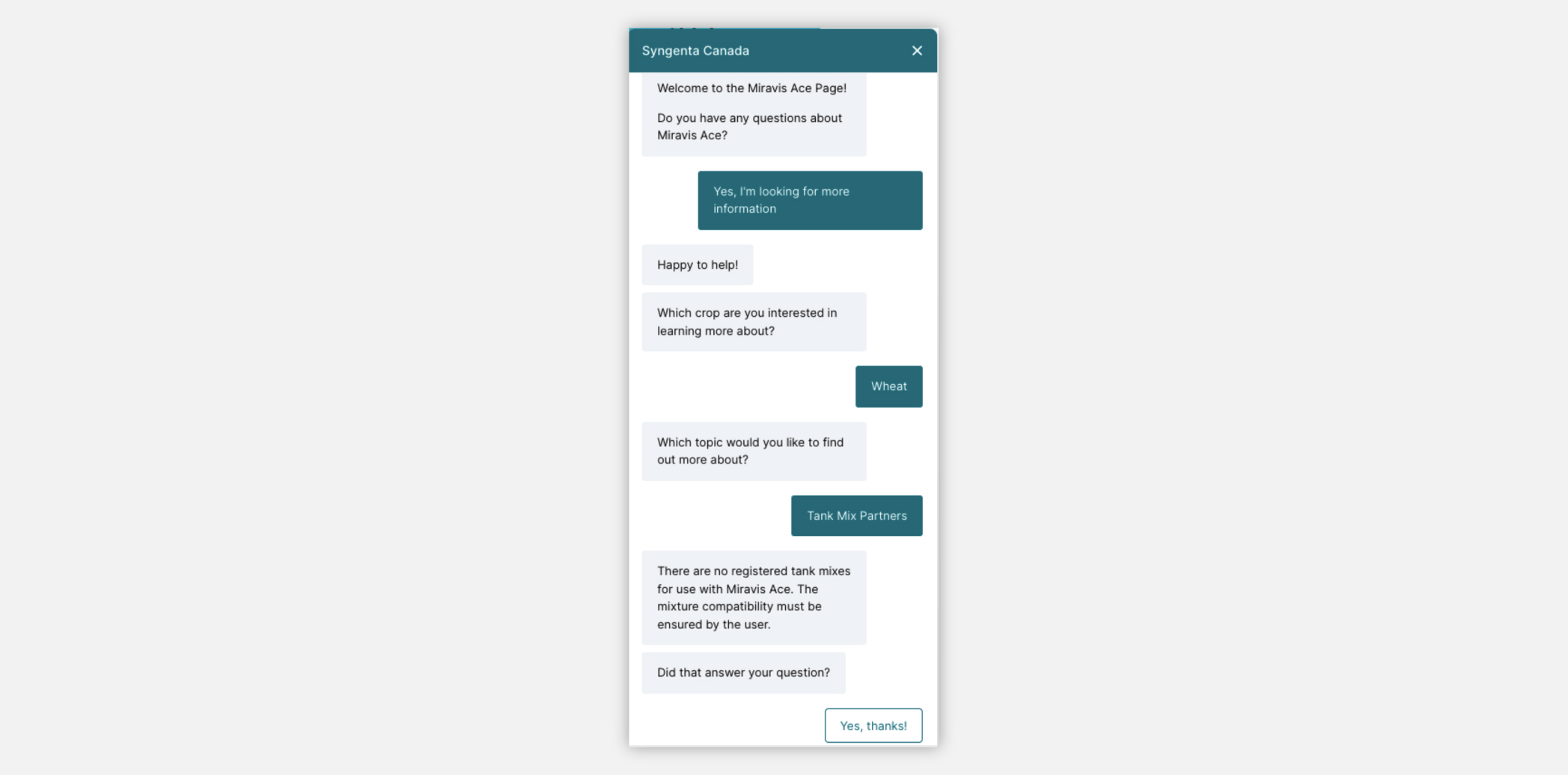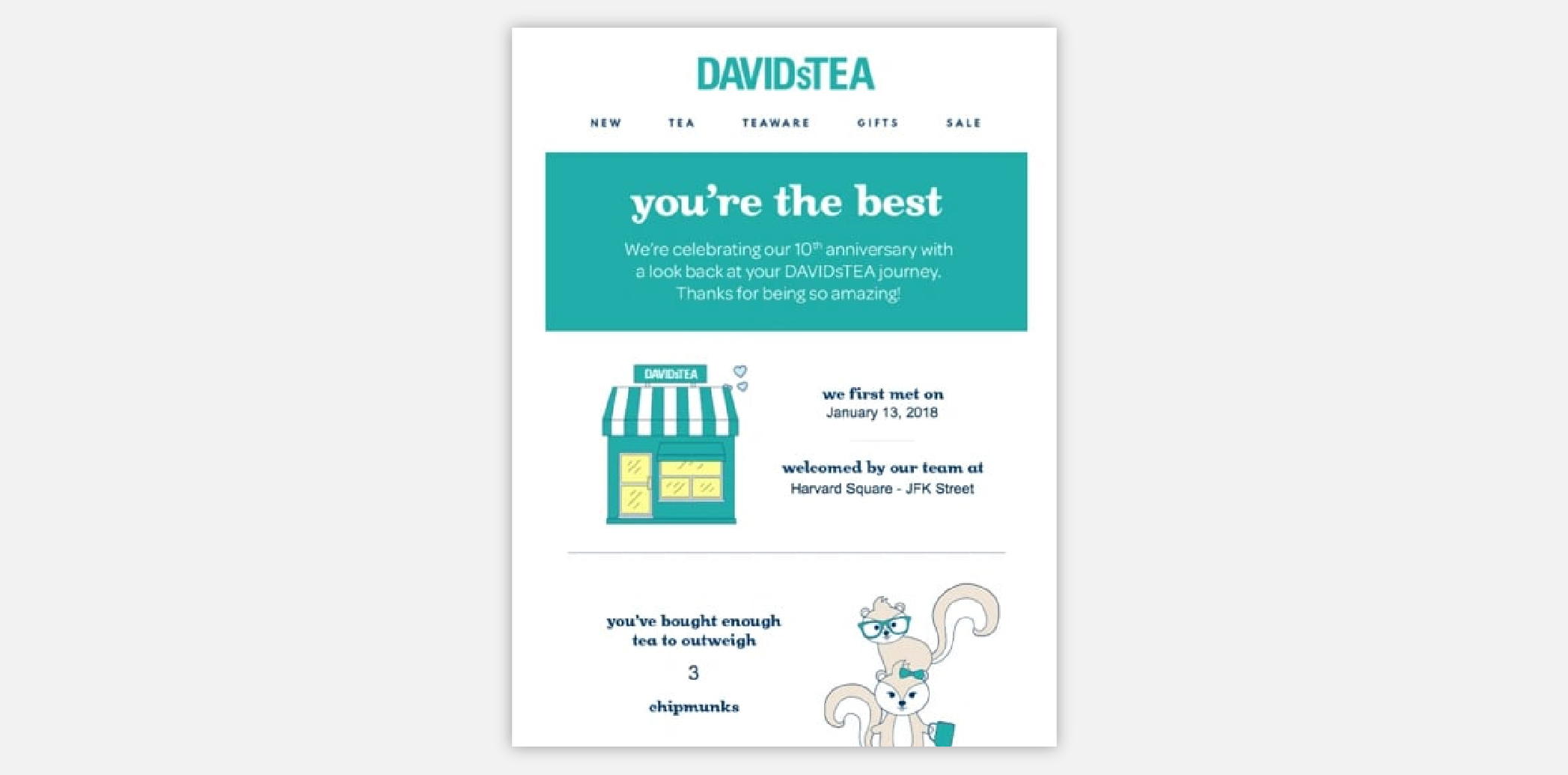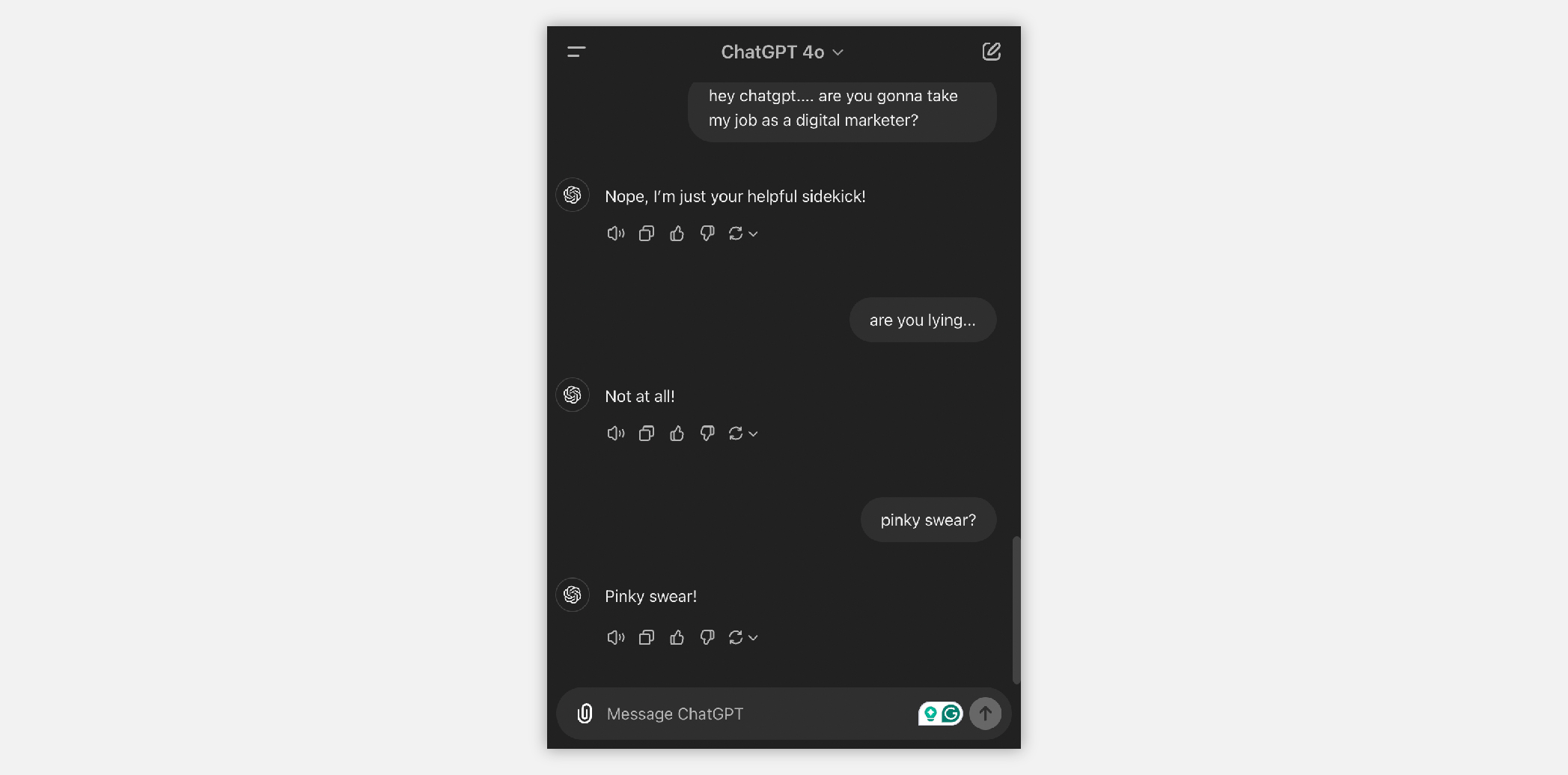MythBusters Marketing Edition: Debunking 10 B2B marketing myths
By: Krishal Ramesh
October 17, 2024 | Reading Time: 16 mins
You’ve probably heard many polarizing marketing claims on LinkedIn. Marketing “coaches” saying things like: “SEO is dead”, “More content equals more success”, or “You need to be on every social media platform.” The list goes on.
Tearing a page straight out of the MythBusters playbook, we’re taking on those marketing myths and tackling the biggest marketing misconceptions. We’ll hit you with the facts, the data, and sprinkle in a little drama along the way. So grab your safety goggles, cue the dramatic music and explosions—because we’re not just talking about marketing myths, we’re blowing them up 💥.
Myth 1: SEO is DEAD. Paid Ads are the Only Way to Drive Traffic
Why It’s Popular: This myth has gained traction over the years, especially because Google has been making changes that prioritize paid ads and sponsored results.
With those top slots occupied by ads, it seems like SEO isn’t worth investing in anymore. Many marketers believe that the only way to get on the first page is to throw money at Google Ads, leaving organic search in the dust. Add the rise of instant gratification marketing (i.e., “I want results now!”), and you can see why this myth persists.
The Facts: SEO is alive and still evolving.
While it’s true that Google gives prime real estate to sponsored results, 53% of all trackable web traffic still comes from organic search. According to research from Varn, 77% of users recognize and scroll past search ads, opting instead to click on the more trusted organic links.
Think about it—when you’re searching for a product or service, you’re still going to Google to inform your decision. Sure, you might click on a compelling ad, but you’re more likely to check out a few organic results too. Ranking high organically is arguably even more important now because with fewer organic spots on the first page, getting in that top 3 or 4 organic results is gold. It signals trustworthiness and authority to users.
Voice search and mobile-first indexing have also reshaped the SEO landscape. Optimizing for user intent, multimedia, and mobile is now crucial to staying visible.

Myth BUSTED. SEO is very much alive, just dressed in a new outfit. Paid ads might give you quick wins, but SEO gives you sustained growth. Ignore it at your own peril.
Myth 2: Businesses Need to Be Active on Every Social Media Platform to Reach Their Audience
Why It’s Popular: The fear of missing out is real.
With new social platforms popping up constantly, there’s underlying pressure to hop on every bandwagon, like you’re going to miss some big opportunity if you’re not on all of them. By 2024, some B2B marketers still believe that to build brand awareness and gain customer trust, you’ve got to be everywhere, all at once, or risk falling behind your competitors.
Trying to do everything, everywhere all at once will burn you out—and it’s not even that effective.
The Facts: Focusing on fewer platforms where your target audience is most active is far more strategic.
Hootsuite’s 2024 social media report highlights that the average social media user logs into seven platforms per month, making it challenging for brands to maintain a meaningful presence on multiple networks. 58% of marketers say the constant changes in social platforms make it difficult to keep up, therefore organizations are now prioritizing platform-by-platform ROI to decide where to focus their efforts.
Which of the following issues do you think contribute to your organization’s concern about ROI for social media activities?

At Stryve, we’ve embraced a multichannel approach but instead of trying to be everywhere, we’ve strategically dropped platforms that were draining resources, like Facebook, X, and Threads. This shift allows us to focus on creating unique and valuable content for the platforms that truly matter to us—LinkedIn and Instagram.
On LinkedIn, we share professional content such as blogs, case studies, and thought leadership pieces, building trust and showcasing expertise to potential clients. On Instagram, our content is more casual and cultural, celebrating team wins and sharing behind-the-scenes glimpses of our work. By honing in on these two key platforms, we maximize our impact and ensure that our content aligns with the unique expectations of audiences on each platform.
We’re not the only ones. The same report says that brands are becoming more strategic by cutting platforms that don’t deliver ROI. For instance, while 60% of businesses have a presence on X, only a third feel strongly that it benefits their business, leading to a 7% drop in brand use. Businesses are becoming smarter about where they invest their resources, focusing on the platforms that drive real results.
Change in platform use for businesses from 2022 to 2023 (HootSuite)


Myth BUSTED. By narrowing down and tailoring our content for each platform, you can maximize impact, keep your audience engaged, and make sure you’re not wasting energy. It also allows your brand to balance authority with approachability.
Myth 3: Mentioning Competitors Will Damage Your Brand and Give Them Free Publicity
Why It’s Popular: There’s a deep-rooted fear among marketers about saying the wrong thing, and this is especially true when it comes to talking about competitors.
Many brands worry that even mentioning the competition will give them free publicity or, worse, make you look insecure about your own product. No one wants to fumble and accidentally boost the brand they’re trying to outshine. The risk can be real—there’s always the concern of unintentionally crossing legal lines, like making false claims or misrepresenting a competitor’s product, which can lead to defamation or even legal trouble. In highly regulated industries, where even small missteps can have big consequences, it’s easy to see why this myth persists and keeps brands from engaging in any form of competitive dialogue.
The Facts: While it’s true that you need to tread carefully, especially in regulated industries, there’s nothing wrong with mentioning competitors when done thoughtfully.
It’s all about how you frame the comparison. You can highlight your strengths without crossing into defamation or making false claims. Addressing competitors directly can signal confidence and transparency, both of which are extremely important to buyers. Smart brands focus on what they do better, positioning their strengths in a way that naturally sets them apart—making it clear why they’re the smarter choice, without tearing the competition down.
If you’re the category leader, like Coke is over Pepsi, you typically won’t mention competitors because you’re already the standard. You don’t need to acknowledge them—everyone knows who’s on top, so doing so would only elevate them. But if you’re the challenger, like Pepsi, calling out the competition can work in your favour. Pepsi does it smartly too—they don’t make it a personal attack. Instead, they keep it playful and light, often using a clever, tongue-in-cheek approach that leaves viewers entertained, not bitter. Who can forget this iconic 2001 ad:
This tactic works in B2B marketing, too. Recently, we were searching for conversational marketing tools for a client looking to move away from using Drift. While researching alternatives, we stumbled upon a Qualified landing page that spoke directly to our needs. They didn’t shy away from mentioning Drift, making a compelling comparison that addressed the reasons why we were considering a switch.
By mentioning competitors on landing pages or social media, you also increase your chances of showing up when people are actively researching alternatives. For example, we discovered Qualified’s landing page by searching for “Drift chatbot alternatives” on Google. Their strategic mention of Drift allowed them to be part of the conversation when we were evaluating options, positioning them as a stronger solution.
The messaging on the landing page ties directly into this myth—Qualified doesn’t just reference Drift for the sake of it. They call out their strengths in a way that directly targets the pain points Drift customers like experience. It wasn’t about tearing Drift down but showing why Qualified was the better choice for businesses ready to level up their marketing efforts. By doing this, they build trust and confidence, giving us clear reasons to make the switch.


Myth BUSTED. Mentioning competitors doesn’t hurt your brand. When done thoughtfully, it can build trust and highlight your strengths, making you the smarter choice.
Myth 4: Chatbots Drive Users Away Because They’re Impersonal, Salesy, and Frustrating
Why It’s Popular: People find them pushy or insincere.
Let’s face it, we’ve all encountered those clunky, ineffective chatbots that seem more interested in collecting your email than solving your problem. Many people associate chatbots with pushy, sales-driven interactions that don’t provide real value, leaving customers feeling like they’re being forced into a funnel. As a result, marketers have backed away from using them, assuming chatbots do more harm than good.
The Facts: Chatbots are only annoying when they’re done badly.
When chatbots are designed purely as sales tools, they feel impersonal and unhelpful, which is where their bad reputation comes from. However, if a chatbot is built with user experience in mind, it can actually enhance customer satisfaction by providing quick, accurate information right when it’s needed. A study by Master of Code found that 87% of consumers are satisfied with their chatbot interactions—when the bot delivers fast, relevant answers. The key here is that a good chatbot isn’t just about capturing emails; it’s about making the user’s life easier.
Take Qualified as an example again. Even though I’m already a customer, their chatbot continues to add value by answering my questions quickly and linking me to relevant resources. Whether I need help formatting text or finding specific information, their chatbot efficiently guides me to the answer without forcing me to wade through a sea of knowledge bases. That’s a great example of how a chatbot can streamline the experience for users, turning a potential pain point into a win.

Another great case is one of Stryve’s clients, Syngenta, whose chatbot helps customers navigate the website by answering questions directly, instead of expecting users to scroll through pages and pages of content. This not only saves time but creates a positive experience for their users who are usually in a rush and want quick answers. In fact, we’ve seen more engagement when lead capture isn’t the primary goal, showing that customers prefer bots that help, rather than bots that sell. When it comes time for those users to make a purchasing decision, they’re more likely to buy because they’ve already had helpful, meaningful interactions with the brand.


Myth BUSTED. It’s not about capturing an email at every touchpoint—it’s about delivering value and enabling customer success.
Myth 5: Effective Influencer campaigns require Influencers with Large Followings
Why It’s Popular: The belief that only big-name influencers can drive effective campaigns stems from the traditional appeal of celebrity endorsements.
For years, brands have relied on famous faces to build instant credibility and reach wide audiences. When people see a massive follower count, they assume it translates directly to success. The logic is simple: more followers equals more eyes on your brand, which should mean better results. This mindset persists because the sheer numbers seem like a guaranteed formula for boosting engagement.
The Facts: Micro- and nano-influencers are the new wave.
Micro-influencers (those with 10,000 to 100,000 followers) can achieve engagement rates up to 60% higher and enjoy over 20% higher conversion rates than mega-influencers because their audiences are more loyal and dedicated. These smaller influencers often cultivate tight-knit, niche communities where followers genuinely trust their recommendations. In today’s marketing landscape, authenticity is everything—and micro-influencers offer just that. Instead of just reaching people, micro-influencers are connecting with them in more meaningful and authentic ways, which resonates far better with audiences who are increasingly turned off by overly polished, impersonal ads.
And it gets better. Not only do micro-influencers offer higher engagement and conversions, but they also do so at a lower cost. Partnering with these influencers can be significantly more cost-effective than shelling out huge sums for a celebrity or mega-influencer. Plus, their niche audiences are great if you’re looking to target a specific demographic or industry.
We’ve seen this across many companies in the financial space. For example, to promote the Walmart Rewards Mastercard in Canada, Walmart Canada partnered with Richelle Brooke, an influencer who creates content about food, fashion, family and parenthood.
Another great example is WealthSimple’s partnership with Ellyce Fulmore, a finance management influencer with a young working professional audience, for the WealthSimple Foundation. This Calgary-based finance influencer made perfect cents for the Canadian company’s foundation focused on financial education.
At Stryve, we’re exploring a strategy that proves you don’t need mega-influencers to build a strong brand. Instead of chasing large follower counts on our company page, we’re piloting a LinkedIn influencer approach by empowering our employees to grow their personal brands. By encouraging them to gain followers and share their expertise (on company time, of course), we’ve created a network of micro-influencers who elevate our company’s brand in a more authentic way. This approach shows that it’s not about having huge followings—it’s about building trust and engagement through real, relatable voices. As our employees grow their influence and nurture their own networks, Stryve’s visibility naturally increases, proving that smaller, more authentic followings can deliver meaningful results.

Myth BUSTED. Bigger isn’t always better. Micro-influencers with smaller, engaged audiences can drive powerful results without the need for a massive follower count.
Myth 6: Long-form content is outdated, and no one has the attention span for it anymore.
Why It’s Popular: TikTok and doom-scrolling culture.

With social media platforms like TikTok and Instagram promoting short, snappy videos, many marketers believe that audiences no longer have the patience for long-form content. The rise and success of bite-sized content has convinced brands that they need to constantly produce quick hits to keep their audience engaged.
The Facts: B2B is complex and multi-faceted which long-form can tackle.
In reality, long-form content still plays a crucial role, especially in B2B marketing. Research by Stratabeat shows that long-form articles (over 3,000 words) get 4x more shares than shorter posts. Readers invest more time in longer content when it’s insightful, comprehensive, and packed with value. Long-form content also tends to performs better on search engines, helps establish thought leadership, and keeps users on your site longer, boosting engagement and credibility.
If you’ve made it this far into this blog, you’re living proof of the value of long-form content.

Myth BUSTED. When it comes to content, attention spans aren’t necessarily shrinking—it’s about delivering valuable, in-depth insights that matter to your audience.
Myth 7: Social media has killed email marketing, and it’s no longer an effective way to reach customers.
Why It’s Popular: Email has been around for a long-time so it’s not as shiny or new.

With the explosion of social media and instant messaging, email seems old-school. People often assume that users are too overwhelmed with overflowing inboxes to pay attention to marketing emails. This perception persists as marketers focus more on flashy social media campaigns than traditional email.
The Facts: Email gives direct access to your owned audience and it can have a 1:1 personal touch, with no algorithms getting in your way
Email marketing is far from dead—it’s still one of the most effective marketing tools available. In fact, Litmus’s report states that for every $1 spent on email marketing, the average ROI is $36. Unlike social media, emails give you direct access to your audience without having to worry about fluctuating algorithms. When done right, personalized and well-targeted email campaigns drive more engagement and sales conversions than many social media efforts. In fact, 66% of consumers say that email influences their purchase decisions.
Email campaigns only work when they’re done well. The reason so many B2B emails get ignored? They’re poorly executed. Sending generic, impersonal emails with no regard for customization or targeting is a surefire way to get your message deleted. For example, if you’re promoting a tool meant for decision-makers but are sending the email to a junior-level employee that’s bad targeting. To be effective, email marketing needs to be personalized, relevant, and delivered to the right audience. When you focus on quality over quantity, email marketing can remain one of the most powerful tools for influencing decisions and driving conversions.
To be effective, email marketing needs to be personalized, relevant, and deliver value to the right audience. When you focus on quality over quantity, email marketing can remain one of the most powerful tools for influencing decisions and driving conversions.
We love this example from Smartsheet, which demonstrates how to respect your recipients’ time while delivering value. Their new user email uses large images and minimal text to quickly highlight useful resources—perfect for busy professionals. Smartsheet understands that its audience doesn’t have time for fluff, and it communicates that effectively from the start.

We also love DAVIDsTEA’s email marketing approach. They consistently deliver cheeky, highly personalized emails with a friendly, inviting personality that makes each message feel like a conversation rather than just a promotion. It’s a perfect example of how brand voice and personalization can turn emails into an engaging experience for the user.

Myth 8: AI Will Replace Digital Marketers
Why It’s Popular: New technology taps into fear of the unknown and feels threatening.
As artificial intelligence tools like ChatGPT become more sophisticated, it’s easy to believe that AI will eventually take over tasks traditionally handled by marketers. Automated data analysis, content generation, and chatbots make it seem like human input is no longer necessary.
The Facts: AI will support us with monotonous admin work so we can focus on high-value work.
AI is undeniably a powerful tool, but it’s just that—a tool. It lacks the nuance, creativity, and strategic thinking required for truly effective digital marketing. While AI can handle repetitive tasks like data analysis, customer segmentation, and even basic content generation, it cannot replace the human element crucial to building a brand identity, crafting compelling narratives, and making high-level strategic decisions. As we pointed out in our recent blog on the AI revolution, AI tools like ChatGPT will enhance workflows by speeding up processes, but the real value still comes from human marketers who know how to use AI tools strategically.

AI can help automate content creation, but it doesn’t understand tone, culture, or the emotional depth required to truly connect with an audience. It can assist with brainstorming or executing repetitive tasks, but it cannot replicate the complexity and thoughtfulness needed to manage client expectations, develop brand voice, or deliver the next game-changing campaign. At the end of the day, AI is a powerful assistant, not a replacement. It enhances what marketers do but cannot fully replicate the strategic, creative thinking that makes marketing so impactful. Plus, AI pinky promised.


Myth BUSTED. AI can assist with marketing tasks, but digital marketers aren’t going anywhere—human creativity, strategy, and empathy are still essential to delivering real results.
Myth 9: More Content = Better Results
Why It’s Popular: People perceive quantity as high investment in content.
With the constant push for updates and fresh material, many marketers believe that producing more content will automatically lead to success. The old “content is king” mantra has evolved into a numbers game, where some brands churn out content without paying attention to quality (performative content), thinking sheer volume will drive results.
The Facts: Quality always beats quantity.
More content doesn’t equal better results. Google’s algorithms now prioritize valuable, in-depth content over low-quality, keyword-stuffed posts. In fact, too much low-value content can harm your website’s performance. Audiences are becoming more protective of their time. They want content that’s relevant, insightful, and well-researched. Simply churning out fluff can damage your brand’s credibility.
We focus on creating valuable content on a consistent schedule, rather than flooding our blog with keyword-stuffed posts just for the sake of it. Take these examples: our blog on how to bring out the best in your employees, a step-by-step guide on creating a logo package for your client, or the post that teaches designers how to manage their files—these are some of our most consistently read blogs. Why? Because they provide personal, actionable insights that resonate with users and deliver real value.

Myth BUSTED. More content doesn’t guarantee success—high-quality, impactful content is what drives meaningful engagement.
Myth 10: Having More Followers on Social Media Will Automatically Lead to More Sales.
Why It’s Popular: Classic beliefs of popularity contests.
The numbers game in social media marketing makes it easy to assume that more followers translate to more potential customers. The focus on follower counts has led many to believe that bigger audiences lead to higher conversions.
The Facts: Vanity metrics don’t lead to sales. Trust and relationships do, so focus on engagement.
Follower growth on social media isn’t—and shouldn’t be—primarily about driving sales. It plays a much more strategic role in your overall marketing function. Social media is where you build trust, engagement, and brand awareness. It’s about creating a community that connects with your brand, engages with your content, and feels like part of your journey. Follower growth supports long-term goals like brand loyalty and customer retention, not just immediate sales. When followers trust your brand, they’re more likely to convert over time, but the focus should always be on fostering connections and delivering value, not just pushing products.

Myth BUSTED. At the end of the day, it’s not about how many people are following you—it’s about how many people are engaged and trust your brand enough to make a purchase.
And there you have it—10 marketing myths, BUSTED!💥
We’ve taken the rumours, questioned them with stats, and watched them go up in flames 🔥. So, next time you hear someone say SEO is dead or you need to be on every social media platform, you’ll know better. In the world of marketing, it’s not about how much you do, it’s about how well you do it. Quality, strategy, and authenticity will always win out. 
And with that, it’s time to take off those safety goggles—until the next myth needs busting!








